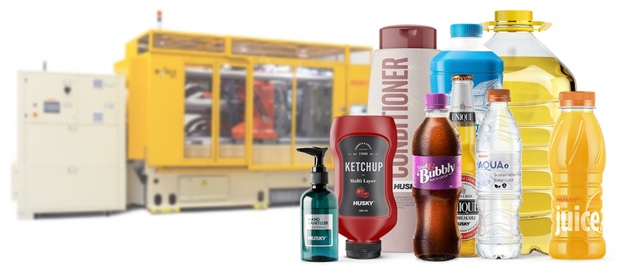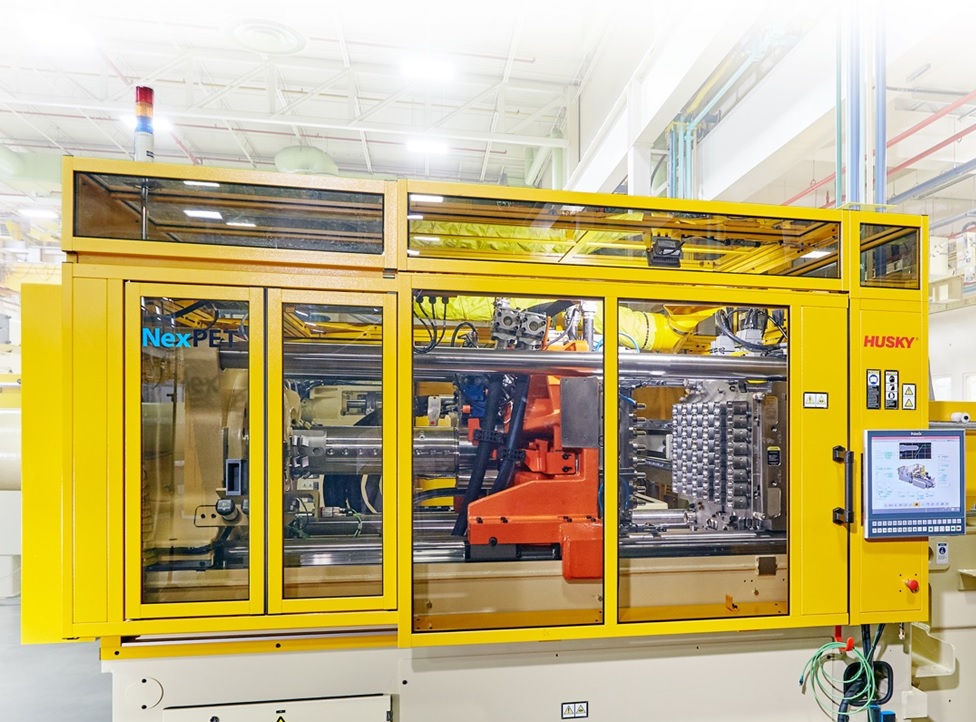Today's packaging industry is very dynamic. As demand grows, the need for more efficient production systems also grows. Polyethylene terephthalate (PET) is one of the popular materials for the production of packaging because of its many unique properties.
Husky Injection Molding Systems has been on the forefront of innovations in injection moulding. In a webinar, “Top Trends and Technologies in Preform-Based PET Packaging,” organised by Ringier Events on 22 March 2022, Supakdee Sodsriwiboon, Product Manager, Beverage Packaging at Husky Injection Molding Systems discussed how the leading trends in production technologies have created an impact in the production of PET bottles and containers – with a view of maximising production, efficiency, and competitiveness in the coming decade.

Mr. Supakdee Sodsriwiboon, Product Manager, Beverage Packaging,
Husky Injection Molding Systems
Opportunities and technology trends in perspective
Emerging trends in technologies for PET preform-based applications are creating opportunities for both PET packaging manufacturers and machinery providers. An overview of the Southeast Asian market reveals growing opportunity for PET preform-based applications. A study by Global Data indicates that projected applications in this region from 2021-2025 shows that upward spike in PET applications for beverages is reflected in 2.4% annual CAGR growth for water; 2.7% growth in energy drinks; 3.6% growth for carbonated soft drinks (CSD); 3.6% for iced/coffee/tea drinks; 5.9% for juice; and 10% for enhanced water. Based on the report by Mintel, the demand for PET demand for PET packaging for the period 2014-2024 indicates opportunity to producers as rising conversion to PET from alternate materials such as carton, glass, aluminium, HDPE and other plastics is anticipated. PET growth as percentage share versus all other materials are shown in Indonesia growing from 20 to 26%; Malaysia up from 21 to 27%; Philippines expanding from 19 to 30%; and Thailand posting from 26 to 35% growth.
Mr. Sodsriwiboon explains that PET adoption is growing due to three major reasons. One is flexibility as PET has many uses and can be easily adapted to new designs that appeal to the market. Another reason cited is sustainability since PET is lightweight and there is now a growing number of recycling facilities available to recycle PET and yield recycled PET (rPET) that can be used to produce new products. Last but not the least, the use of PET is cost-effective for many producers as production is scaled and technologies can be maximised.
The trend towards more sustainable packaging and manufacturing processes is clearly here to stay for the long term. This trend is really mandatory with new legislation like the Single Use Plastics regulation in Europe and many other various recycled content mandates coming into effect around the world over the next several years. As Mr. Sodsriwiboon elaborates, “We see this evolution embodied by leading brands such as Ice River Springs, Nestlé Waters, Coca-Cola Company and Danone, who have already introduced packaging made from 100% recycled PET. The top sustainability issues we expect to continue seeing include implementing production of recycled materials, increasing use of recycled materials, reduced use of PET resin through lightweighting initiatives, and reduced energy consumption.”

Also, preform-based PET packaging and its growing popularity is impacted by several market trends, among them the changing consumer demand where the need to adapt to consumer preferences should be taken into consideration. Consumers now prefer convenience plus lightweight and attractive packaging. As Mr. Sodsriwiboon explains, “Consumers are increasingly demanding a greater variety of food and beverage products, oftentimes fuelled by a demand for premium products aimed at niche markets and with increased personalisation.”
As a result of these trends, packaging manufacturers need to be flexible and adaptable to produce a wider range of stock keeping units (SKUs) with unique designs, sizes, and quantity of output required. This explains why producers are requiring more flexible, adaptable systems that are purpose-built to minimise the cost and time required to introduce tooling for a new SKU such as moulds with fewer components; features to reduce the conversion and acquisition cost of the tooling required for the repeated introduction of multiple SKUs; configurability of specifications such as resin throughput, shot size, cavitation and pitch of the mould; and faster mould changeovers allowing for the switchover of production in a fast, cost-effective way.
An interesting aspect of Mr. Sodsriwiboon’s presentation is on the large format applications for preform-based PET. As the global coronavirus pandemic has created a huge impact on the patterns of consumption, it has been noticeable that the general trend has been the polarisation of size preferences moving away from the mid-size segment towards large multi-serve sizes and towards smaller sizes sold in multi-packs. As consumers stocked up ahead of lockdowns, there has been an uptick in demand for larger formats from 1.5L and up.
Solving production challenges
Producing more sustainable packaging requires careful planning, the right technology and working with an experienced provider to overcome the challenges. Husky Injection Molding Systems has been working to overcome and provide solutions to production challenges to enable PET packaging manufacturers increase their competitiveness, such as prevailing defects due to resin contamination and variability; dust creation in mould vents; inadequate drying conditions and poor quality material; and inhomogeneous melt properties. With the technology solutions from Husky, it has become possible to be successful in production using rPET materials. The added advantages of post-mould conditioning; downstream inspection; self-cleaning mould; fully-integrated dryer with metal separator, integrated blender, integrated controls, optimised hopper and oil condenser; and best in class melt management are at work in Husky’s technology solutions.
Known for their higher output systems that are aimed at reducing operating costs while boosting productivity, Husky provides solutions to ensure greater competitiveness in the market. The company’s Advantage+Elite is being offered as a proactive, predictive, transparent monitoring solution as a standard feature on all PET and Closure systems. Advantage+EliteTM monitors systems within customers’ production facilities in real-time, while proactively engaging to ensure and maintain the lowest total cost to produce. Using remotely connected technology and proprietary dashboards within a closed-loop reporting platform, Husky continuously monitors and analyses a set of leading system variables to anticipate, recognise and rectify potential issues before they impact productivity or part quality. In addition, this functionality reduces the variability risk associated with running higher levels of post-consumer-resin (PCR), accelerating the shift to manufacture more circular, sustainable packaging with increased percentages of recycled material.

Husky NexPET system
In the case of Husky’s recently introduced NexPET system, the company has designed and evolved a flexible, purpose-built mid-volume system on top of its proven technology – specifically engineered to help producers be more agile and adaptable. The NexPET system offers increased preform output for lower capital investment for easier more affordable entry into new markets; reduced risk with proven Husky precision, reliability and technology; more flexible, wider pitch mould (60x140) to help bring new applications to market quickly and cost-effectively than ever before and to produce preforms with wider threads; features to reduce mould changeover downtime; can run in existing H-PET tooling. The system is capable of running rPET pellets for more sustainable packages and has been enhanced by an optional capability to produce Multi-Layer packages.
Husky also offers its latest-generation HyPET®5e, HyPET®5e+ and HyPET®HPP5e family of systems that are maximising production output with up to 110,000 preform per hour capacity, while reducing part variability and increasing part quality. The Recycled-Flake-to-Preform system is Husky’s most recent development in processing recycled material. This module is offered on the HyPET®HPP5e high performance system designed to support the closed-loop conversion of washed flake to preform by accepting food approved grade melt from an upstream provider. By eliminating the drying and melting steps associated with traditional rPET preform manufacturing, this solution facilitates the effective production of packaging made from 100 percent rPET material, further supporting the circularity of PET.
For more information on Husky Injection Molding systems, visit: https://www.husky.co/en/














